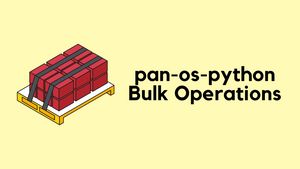In this blog post, let's dive into the world of Python Dictionaries. I've always found myself much more comfortable working with lists, where I can easily use append() or extend() methods and get things done quickly. But when it comes to dictionaries, I often find myself pausing, a bit unsure about the best way to add or update items.
So, if you're someone like me, who finds dictionaries a bit trickier than lists, this post is for you. I'm going to show you a few ways to confidently handle dictionaries, from adding new items to updating existing ones. Let's clear up any confusion and make working with dictionaries as simple as dealing with lists.
Adding a New Item to an Empty Dictionary
Let's start with the very basics - adding an item, or more specifically, a key/value pair, to an empty python dictionary. When you're just beginning to work with dictionaries, this is the fundamental step you'll need to get comfortable with. Here's how you do it.
my_dict = {}
my_dict['key1'] = 'value1'
#output
{'key1': 'value1'}In this example, we first create an empty dictionary named my_dict. Then, we add a new item to it. The item consists of a key 'key1' and its corresponding value 'value1'. It's as simple as that!
Updating an Existing Item in a Dictionary
But what if you want to change this value later? No problem! You can update the value associated with a key in a very similar way. Let's say we want to change 'value1' to 'new value'. Here's how you do it.
my_dict['key1'] = 'new value'#output
{'key1': 'new value'}Adding Multiple Items Using update() Method
Now that we've covered adding a single item, let's move on to adding multiple items at once using the update() method. This is particularly handy when you have several key/value pairs to add to your dictionary. Consider we already have a dictionary with one item.
my_dict = {'key1': 'value1'}Now, we want to add two more items: 'key2': 'value2' and 'key3': 'value3'. Instead of adding them one by one, we can use the update() method.
my_dict.update({'key2': 'value2', 'key3': 'value3'})#output
{'key1': 'value1', 'key2': 'value2', 'key3': 'value3'}With this single line, we've efficiently added two new key/value pairs to my_dict. The update() method is very useful - you can add as many items as you need in one go.
Adding Items to Dictionary within Loop
In situations where you're iterating through a loop and receiving two values at each iteration, such as label and price, you can add them as key/value pairs to a dictionary. Here's a simple script that demonstrates this.
Let's say we have a list of tuples, where each tuple contains a label and a price. We'll loop through this list and add each label and price as key/value pairs to a dictionary.
# List of tuples containing label and price
items = [('Apple', 0.99), ('Banana', 0.50), ('Cherry', 1.50)]
# Create an empty dictionary
my_dict = {}
# Loop through the list and add each label and price as key/value pairs
for label, price in items:
my_dict[label] = price
# Print the resulting dictionary
print(my_dict)#output
{'Apple': 0.99, 'Banana': 0.5, 'Cherry': 1.5}In this script, items is a list of tuples, each representing an item and its price. We iterate over this list, and for each iteration, we extract label and price from the tuple. These are then added to my_dict as a key/value pair where label is the key and price is the value.
Creating a List of Dictionaries in Python
In this example, let's look at how to create a list of dictionaries. This is particularly useful for representing items in an inventory or stock. Each dictionary in the list represents an individual item, complete with various attributes like 'item', 'quantity', and 'price'.
In this example, I'll start with an empty list and use a for loop to fill it with dictionaries. Each dictionary will represent a different item in a shop's stock. We'll assume that the item details are coming from a source like a list of tuples, where each tuple contains the necessary information for one item.
# Data source: list of tuples with item details (item, quantity, price)
item_details = [('Apple', 10, 0.99), ('Banana', 20, 0.50), ('Cherry', 15, 1.50)]
# Initialize an empty list for the shop stock
shop_stock = []
# Use a for loop to process each tuple and add a dictionary to the list
for details in item_details:
item_dict = {'item': details[0], 'quantity': details[1], 'price': details[2]}
shop_stock.append(item_dict)
# Now shop_stock is a list of dictionaries
print(shop_stock)#output
[{'item': 'Apple', 'quantity': 10, 'price': 0.99}, {'item': 'Banana', 'quantity': 20, 'price': 0.5}, {'item': 'Cherry', 'quantity': 15, 'price': 1.5}]item_detailsis a list of tuples, with each tuple containing theitemname,quantity, andprice.- We initialize an empty list named
shop_stock. - We then loop through each tuple in
item_details. - For each tuple, we create a dictionary
item_dictand add it toshop_stockusing theappendmethod.
This will result in shop_stock being a list of dictionaries, each dictionary containing the details of an item.
Closing Up
In conclusion, working with Python dictionaries and lists offers a flexible and efficient way to handle structured data. Whether it's adding a single item to a dictionary, updating values, or creating complex data structures like a list of dictionaries, Python makes these tasks straightforward and manageable.





